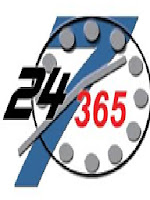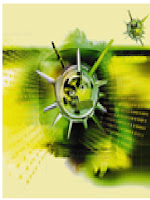Crime prevention and crime
This week I am going to discuss the role of ICT in crime prevention and crimes committed. This section will be broken down into 2 sections: Computers and crime detection and cyber crime.
Introduction
Preventing crime and committing crime through advances in technology has become very complex. The police have taken advantage of what information technology can offer to develop highly complex methods of preventing crime. Equally so is the case of criminals, they have also taken advantage of technology to increase the likelihood of a successful criminal act over the internet.
Preventing crime (ANPR)
ANPR (Automatic Number Plate Recognition). This has been a very successful piece of technology that is used by police to cross reference vehicles that have been marked as questionable by local police or national police. The system works by a video image of the number plate being taken, which the computer then converts into a proper registration number for the vehicle, which is compared to the database to find a match for a flagged vehicle. The system is found on the majority of major roads and motorways, but it is also fitted inside police cars for them to use on the road.
Advantages of ANPR
ANPR is used widely worldwide and with that brings many different advantages for the police.
Reading of number plates- One of the biggest advantages to the police is that ANPR captures and reads uniwue number plates of the vehicle. This is a major advantage to the police because the computer can convert the video image from the camera into a readable number plate. The police from that if given a call over the police radio about stolen vehicle can wait for vehicles to pass and check the number plate of cars that have been flagged by the police as suspicious. The system itself has enabled more motor vehicle criminals to be arrested as identifying suspicious vehicles has become easier.
Accuracy- The ANPR systems over the years of being in the information age have become more accurate. The accuracy has been estimated as an average of 95% accurate. Because of the accuracy the catching of criminals has become easier as the evidence of crime is evident within the database. Following on from that it is even accurate in adverse weather, or reading dirty number plates making them a very useful tool to police who couldn’t possibly see the number plate by eye.
CCTV systems- The system itself complements the CCTV system very well. The ANPR system can be used in conjunction with the CCTV system to capture the number plate. Because of this the ANPR system is highly versatile piece of equipment.
24 hour coverage- It is widely argued that most motor criminals will look to commit crime at night. This is because it is highly unlikely that there will be witnesses to any crime committed. However the ANPR system works 24/7 unless there is a fault, this means that criminals cannot escape the system even in the night. This is hugely advantageous to the police because they can catch criminals any time of the day even if the criminals think they have got away with any crime committed.
Disadvantages of ANPR
Road pricing- One of the biggest disadvantages of ANPR is it cannot be used for road pricing. This is because that if they were placed on all tolls in Britain it would be expensive to install and it would spoil the landscape of Britain. Although the system is highly effective placing the system on border tools like the seven bridge toll could be an effective method for police.
Main roads- When camera´s are placed along main roads only, drivers may avoid registration by using secondary roads which means the ANPR system wouldn’t apply to them. Because of this motor crime along secondary roads will increase. To counter this police would have to employ more officers to enforce theses secondary roads; this will cost allot of money, and in the current economic climate that isn’t possible.
Privacy fears- Many people have expressed fears about being tracked by the government. Because of this many people have described the system as a police state similar to that of a dictator country, even though they are there for the public safety.
Identity fraud- The cloning of number plates can lead to hazardous consequences for the owners of vehicles if used by the wrong people. Because of these cases of identity fraud may increase through ANPR.
My experiences of ANPR
I haven’t personally had any experiences of ANPR, however many people have the same common issue with the system, privacy. Many of the technology that has been developed for the police has come under criticism from the public due to issues of privacy. Many people have thought the ANPR system to be ineffective due to opinions that uninsured drivers caught by ANPR aren’t going to be caught anyway. However I personally feel it is a good method for catching criminals as they can be tracked through different counties in an attempt to catch them. In Humberside recently 347 arrests were made and 31 vehicles recovered through use of ANPR
Cyber crime
Phishing and viruses
Phishing is a type of identity fraud targeted towards individuals or business in attempt to gain access to private/personal information. Phishes may threaten to for example close people’s bank accounts if they don’t reply to the email. If the person replies they will attempt to get the person participating in money laundering stealing their personal information. Phishing is usually in the form of an email and can easily be spotted by key information such as wording or even through the email user. With phishing there a many processes involved these are planning, setup and attack, collection and identity fraud.
Planning- phishers decide which business to target and. They often use the same email address and will look to get certain email addresses through use of spam.
Setup- Once they know which business and individuals to attack phishers try to find ways of sending the message and collecting the data. Most of them will look to webpage’s and spam.
Attack- The phishers will send a false message that seems genuine in attempt to find a victim to attack.
Collection- phishers record the information that people enter into web pages and pop up windows.
Fraud- The phishers will then from the information they have collected make illegal purchases over the internet. They may do this multiple times, and from that will judge the successes and failures of the phishing process, and will perform the cycle again.
Viruses
Introduction -A Computer Virus is a software program that is designed to copy itself over and over again and to attach itself to other programs. Viruses can cause huge amount of time wasting and financial loss for people and businesses. The Melissa virus was very good at spreading itself that many businesses had to shut down their email systems. Viruses don’t damage hardware on a computer; they affect the data and programs stored on your computer. How do they spread?
The easiest method of obtaining a virus is through an email attachment or entering a dangerous website. Viruses can also be obtained through file sharing websites; people can edit these files to add viruses for other people to download. The viruses attempt to copy itself through a type of storage device on your computer such as a floppy disk, memory stick, CD ROM or a DVD.
How they can be removed
Through the information age many companies stated to develop software that could detect and remove these viruses. This type of software is called anti-virus and can be purchased through many different software/ computer companies such as PC world. When the anti-virus software recognizes a virus it will alert the user, and ask them whether they want to remove the virus and clean the system. The software might also ask the user whether or not they wish the virus to be quarantined so that it can be studied by the company for testing. More malicious viruses are always being written so it is important to have an understanding of all latest viruses that have been detected. Many companies will also issue updates to your anti viruses software to make the system more effective towards viruses.
Preventing infections
Antivirus software- Use the antivirus software to scan your computer daily. Doing this can determine after a browsing session whether or not you have picked up an infection.
Scanning emails-You should also scan al emails because they could contain a threat that you don’t know about. Following on from that not opening email attachments from unknown sources is a good way of preventing viruses because this ensures that the risk of contracting a virus is reduced.
Software sharing- You should look to not to download file sharing software because they have the potential to contain viruses that have been uploaded by sharers. The potential for viruses are usually from free downloads as they an enticement for victims of a virus writer.
Other threats
Trojan horse-Log all your keystrokes and then send the details to another person in charge of the Trojan. It can allow someone else to take control of your computer whilst you are online. The Trojan may also use screen shots and send them to another computer to steal private information.
Worms- Like a virus they can spread, however they spread by themselves over multiple networks. They are highly annoying because they can cause network to slow down reducing the bandwidth of the network.
Adware- This is a very harmless virus that logs the adverts that you look at. Because it logs this information you will get adverts that are tailored to yourself on your browser.
Legislation to protect people against viruses and Phishing The computer misuse act of 1990
The computer misuse act of 1990 was passed to prevent unauthorised access to computers or hacking. This also covers virus writing and Phishing.
The principles of the computer misuse act of 1990
· No unauthorised access to computer material
· No accessing with intent to commit an offence. For example a person commits an offense by looking and using newsletter settings of a person and uses this to send an email to a customer or a set of customers asking them to disclose bank details to steal money from their accounts.
· No unauthorized modification to computer material. This is because it is illegal to change other people’s data without the permission of that person.
Computer software
Copyright has 3 offenses
· Illegal Copying, not for Profit
· £2k and/or 6 months
· Mass Copying, not for profit, same penalty + confiscation & compensation to copyright holders.
· Any of the above if used for profit.
Computer Misuse Act 3 offenses
· Unauthorised access to a computer results in, £20,000 and/or 6 months.
· Unauthorised access with intent to cause a further offense, £50, 000 and/or 5 years.
Unauthorised Changing of files through viruses or other malicious programmes, 5 years + £50,000per computer affected.



















No comments:
Post a Comment